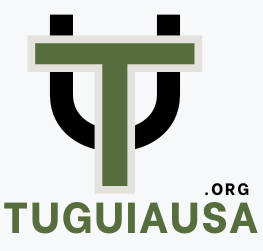In today’s ever-evolving digital landscape, new terms and technologies emerge regularly, shaping how we interact with financial systems, cryptocurrencies, and digital transactions. One such emerging term that has recently started gaining traction is icostamp. Although still relatively new and niche, the concept of icostamp appears to be gaining interest in communities involved in blockchain, digital identity verification, and crypto-based project evaluations. To truly understand icostamp, one must delve into the context in which it is used, its possible functionalities, its role in online ecosystems, and its potential implications for the future of digital economics.
What Is icostamp?
The term icostamp seems to be a hybrid phrase, blending the ideas behind “ICO” (Initial Coin Offering) and “stamp” (as in a digital verification or approval mark). When broken down, the concept implies a kind of validation or approval mechanism related to ICOs or blockchain projects. In the cryptocurrency world, ICOs are methods for startups to raise funds by offering their digital tokens in exchange for established cryptocurrencies like Ethereum or Bitcoin. However, due to the high volume of scams and unreliable projects in the ICO space, there has long been a demand for a trust mechanism. This is where the term icostamp might play a role—as a potential tool or framework for verifying, rating, or certifying the legitimacy and quality of ICOs or blockchain-based initiatives.
While the exact nature of the term is still open to interpretation due to limited formal documentation, icostamp could represent a conceptual solution to the trust issues plaguing the decentralized financial market. It may involve the use of smart contracts, auditing standards, user reviews, and independent verification procedures to build transparency in the ICO environment.
The Rise of Digital Verification Tools
As digital commerce and decentralized finance continue to expand, the importance of verification tools cannot be overstated. Many users entering the crypto space are new to the technology and lack the technical skills to assess the safety or potential of a blockchain project. A system like icostamp, assuming it is or becomes a recognized stamp of approval, can serve to bridge the gap between technical due diligence and user trust.
Verification tools serve multiple functions. They confirm that a company’s documents are legitimate, that a team exists and is competent, and that financial data and roadmap timelines are achievable. Platforms that use or propose something like an icostamp would likely rely on a blend of automated smart contract analysis, human audits, community ratings, and AI-driven evaluation. Such a hybrid system would be designed to make ICO investing safer and more accessible for everyone from retail investors to institutional participants.
Potential Use Cases for icostamp
The icostamp concept opens the door to multiple practical applications across the digital financial space. Here are a few notable use cases:
1. ICO and Token Pre-Screening
Before a token or project is listed for public investment, it could be assigned an icostamp rating based on the quality of its whitepaper, the legitimacy of its founding team, the transparency of its tokenomics, and the feasibility of its roadmap. This would help investors make informed decisions.
2. Smart Contract Audits
An automated or semi-automated system could analyze smart contracts to identify vulnerabilities or red flags. A successful audit would result in an icostamp—a form of visual badge or certificate—indicating that the smart contract meets industry security standards.
3. KYC and Identity Verification
If tied to a verification platform, an icostamp could confirm that the project founders and team members have passed Know Your Customer (KYC) checks, are not anonymous, and have no criminal or fraudulent history. This is crucial in building trust in anonymous blockchain environments.
4. Marketplace and Exchange Listings
Crypto exchanges or NFT marketplaces might use the icostamp model to decide which tokens or collections to list. Verified stamps of approval would act as gatekeeping mechanisms to reduce scams and low-quality listings.
5. Decentralized Community Voting
Projects could be reviewed and scored by the community through decentralized governance mechanisms. Verified votes could lead to an icostamp being awarded to high-rated projects, thus giving weight to community consensus.
Advantages of an icostamp System
An icostamp system, if effectively developed and widely adopted, could bring a multitude of benefits to the digital economy:
- Transparency: An organized evaluation system increases the transparency of ICO projects, reducing fraud and misinformation.
- Investor Confidence: Knowing that a project has undergone stringent checks boosts investor confidence and promotes sustainable growth.
- Accountability: Project developers would be more accountable to maintain quality and transparency if a verification stamp is part of the success metric.
- Simplification for Newcomers: New investors often find it hard to judge the value of crypto projects. A trust symbol like icostamp would simplify their decision-making process.
- Decentralized Trust Mechanism: An open-source, community-driven icostamp would align with the values of decentralization, encouraging community participation in the validation process.
Challenges and Risks
Despite the numerous advantages, there are some risks and challenges associated with implementing a verification system like icostamp.
First, centralization of authority can be a major concern. If the icostamp process is controlled by a single entity, it could lead to bias, censorship, or manipulation. For the system to remain credible, it would need to be decentralized or at least highly transparent.
Second, false positives and negatives could undermine the system. A faulty icostamp could result in a scam project being endorsed or a legitimate project being unfairly rejected. This risk highlights the need for a highly sophisticated and multi-layered evaluation system.
Third, the cost of verification might deter smaller, legitimate projects from seeking an icostamp. If the system becomes too costly or complex, it could end up favoring only well-funded companies, thereby excluding innovative grassroots initiatives.
Lastly, maintaining the integrity of the icostamp system would require constant updates, audits, and oversight. As the technology landscape evolves, so too must the standards and tools behind the icostamp.
How icostamp Could Shape the Future
If developed as a robust framework, icostamp could become a gold standard for digital trust in the blockchain economy. It would represent a paradigm shift in how projects earn trust and credibility—not through hype or marketing, but through verifiable quality and transparency. Much like how SSL certificates are crucial for trust on websites, icostamp could become essential for trust in digital assets and ICOs.
In the long term, icostamp systems might extend beyond crypto and blockchain. They could be adapted to NFT platforms, DeFi apps, digital identity systems, or even AI model validations. As AI and blockchain technologies continue to merge, icostamp-style certifications may act as a key layer of accountability and assurance.
Additionally, regulatory bodies may eventually incorporate icostamp-style certifications into compliance frameworks. Governments or global financial institutions could recognize such systems as part of their due diligence when analyzing emerging projects in the crypto and Web3 space.
Final Thoughts
The term icostamp may still be finding its exact definition, but its implications are highly relevant in today’s digital economy. Whether it develops into a formal protocol, a community standard, or a third-party service, its conceptual foundation reflects a growing need for credibility, security, and transparency in the digital world. As more investors and innovators enter the crypto and blockchain space, tools like icostamp will likely become essential in navigating this high-risk, high-reward landscape.
May Also Read: tuguiausa







